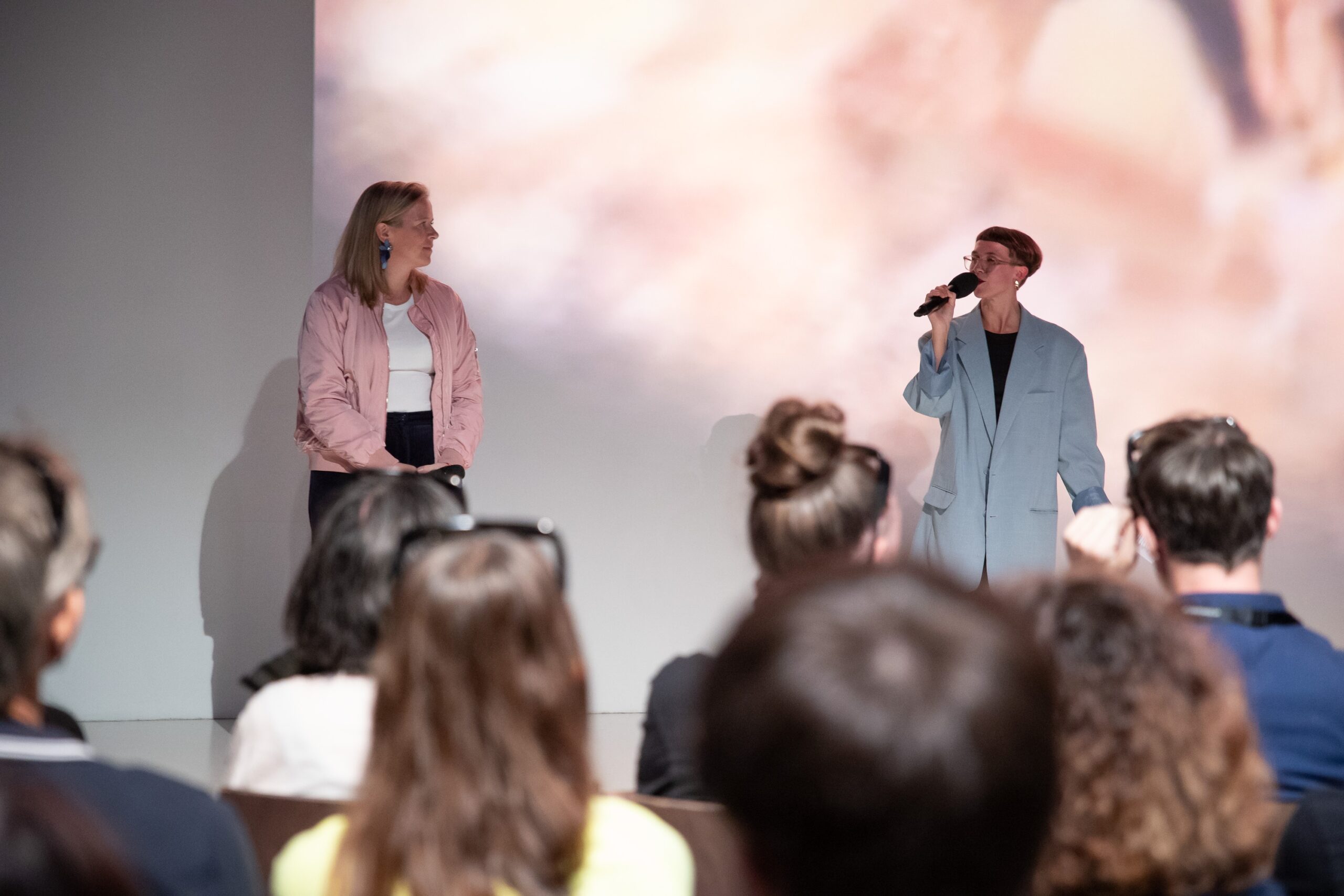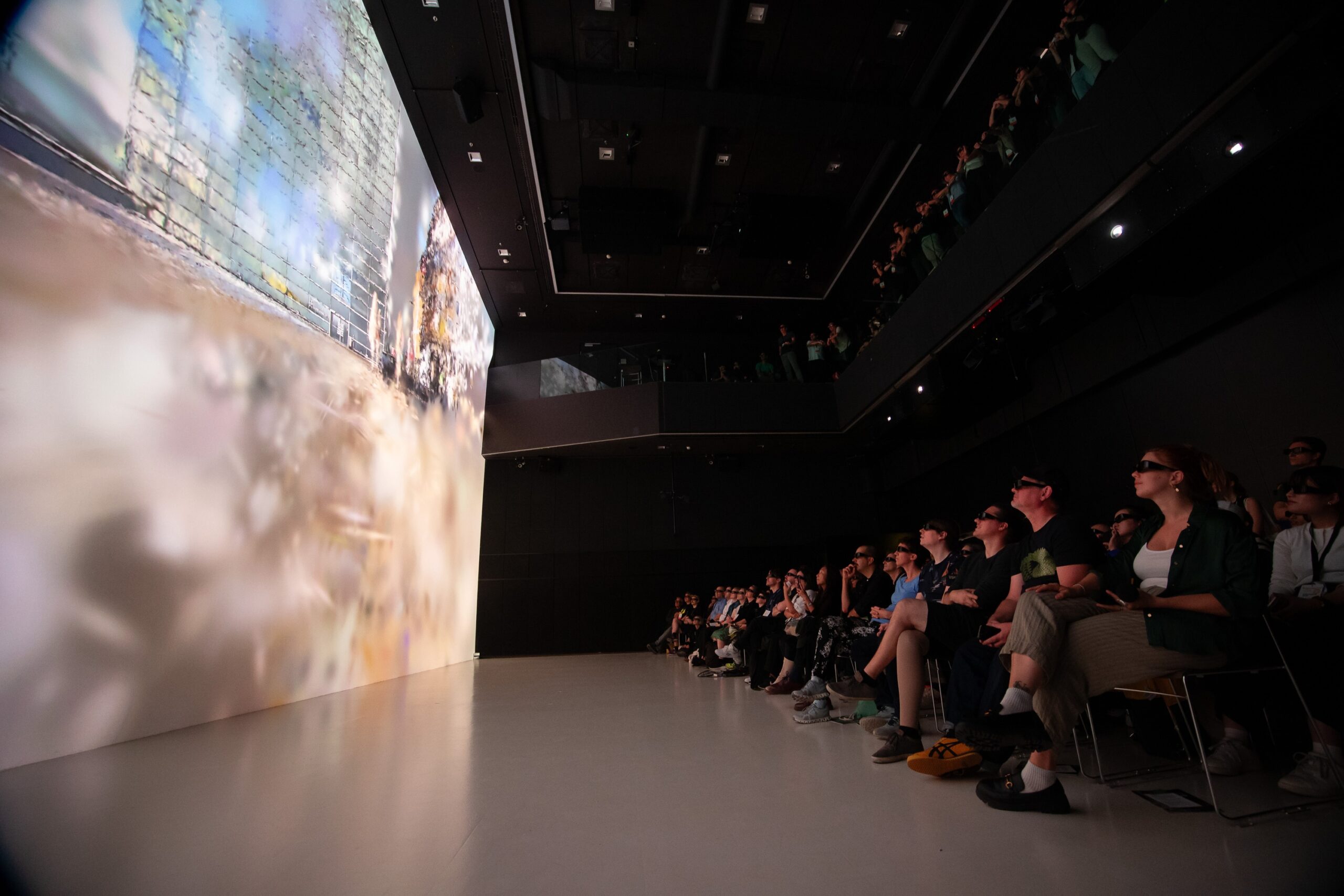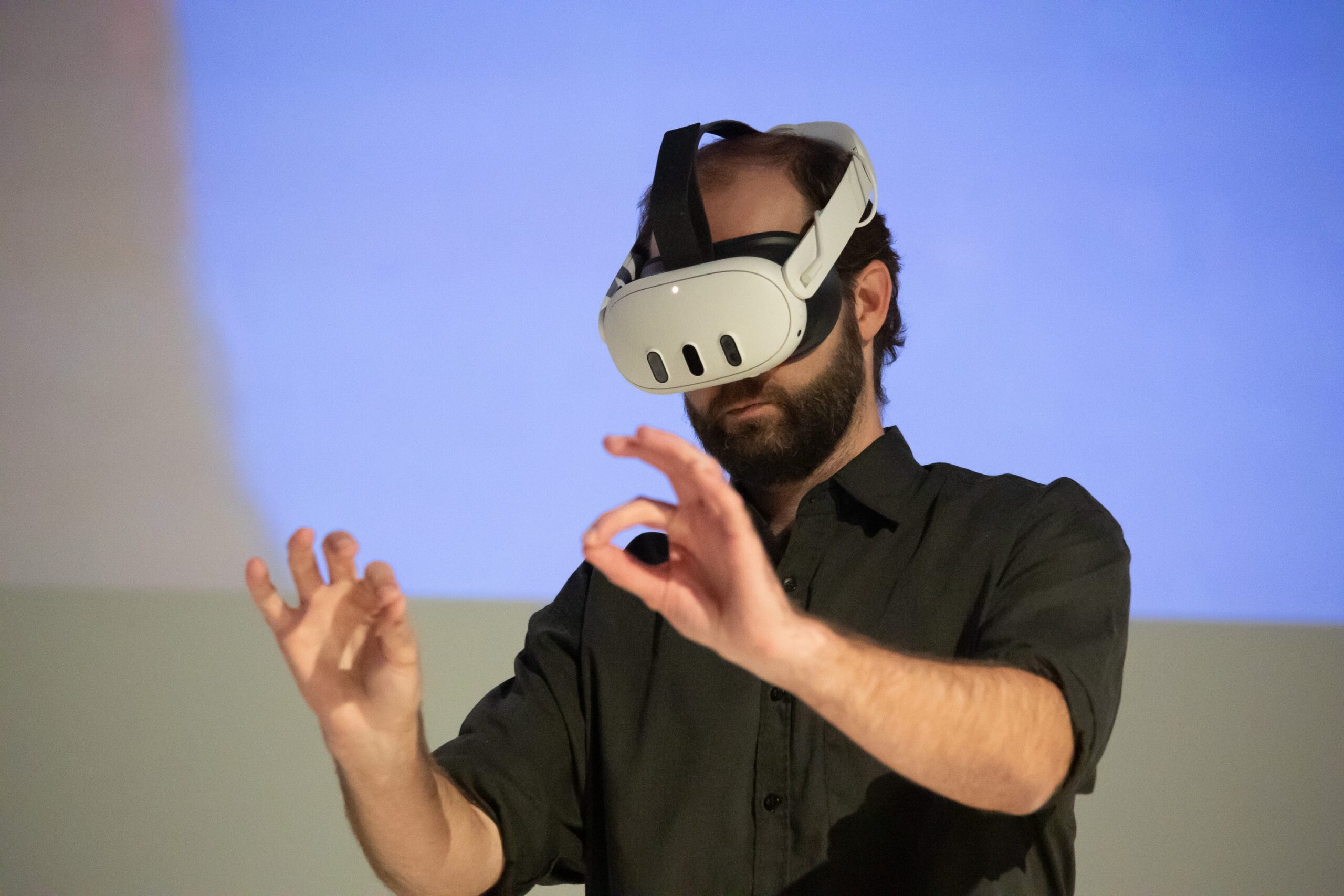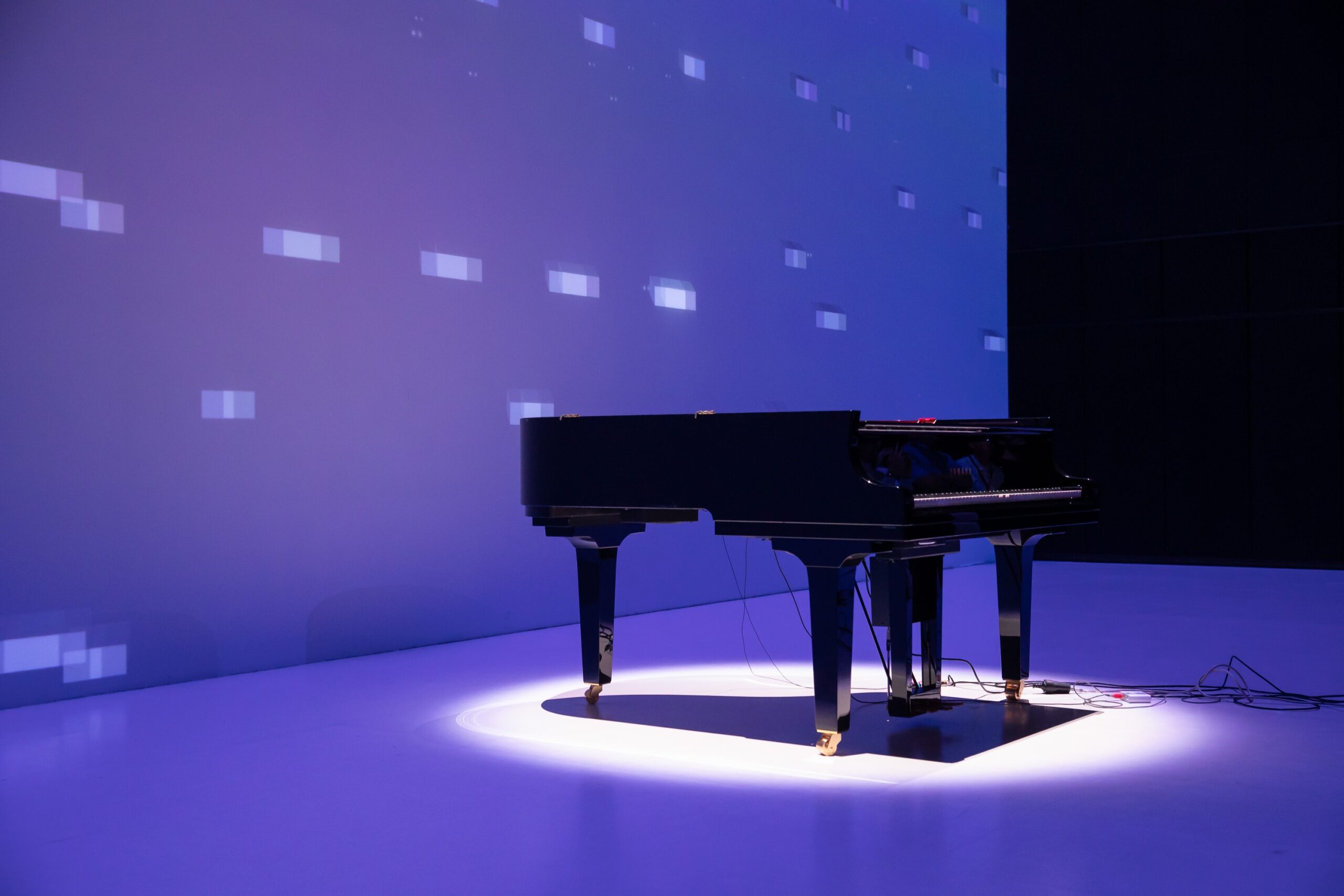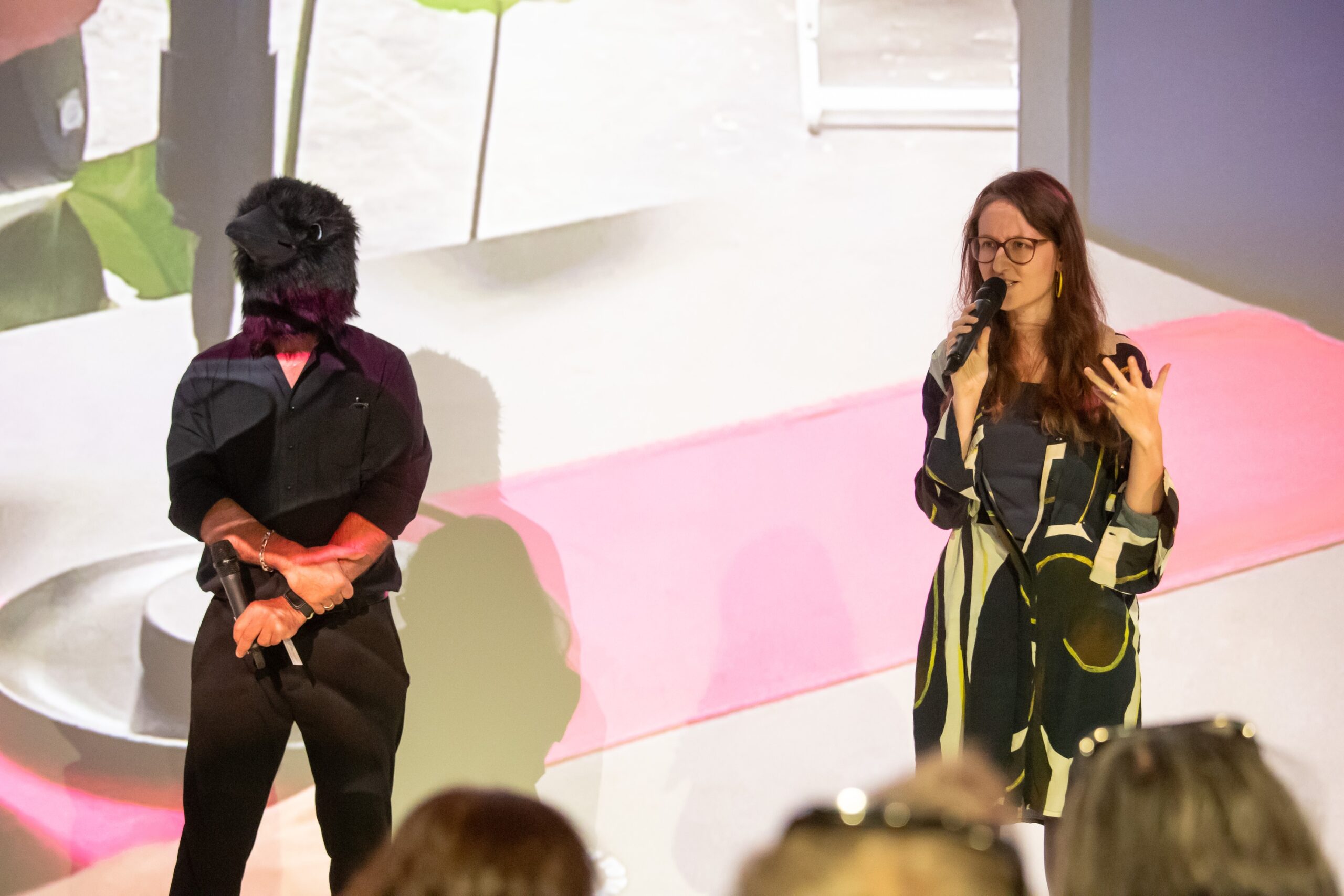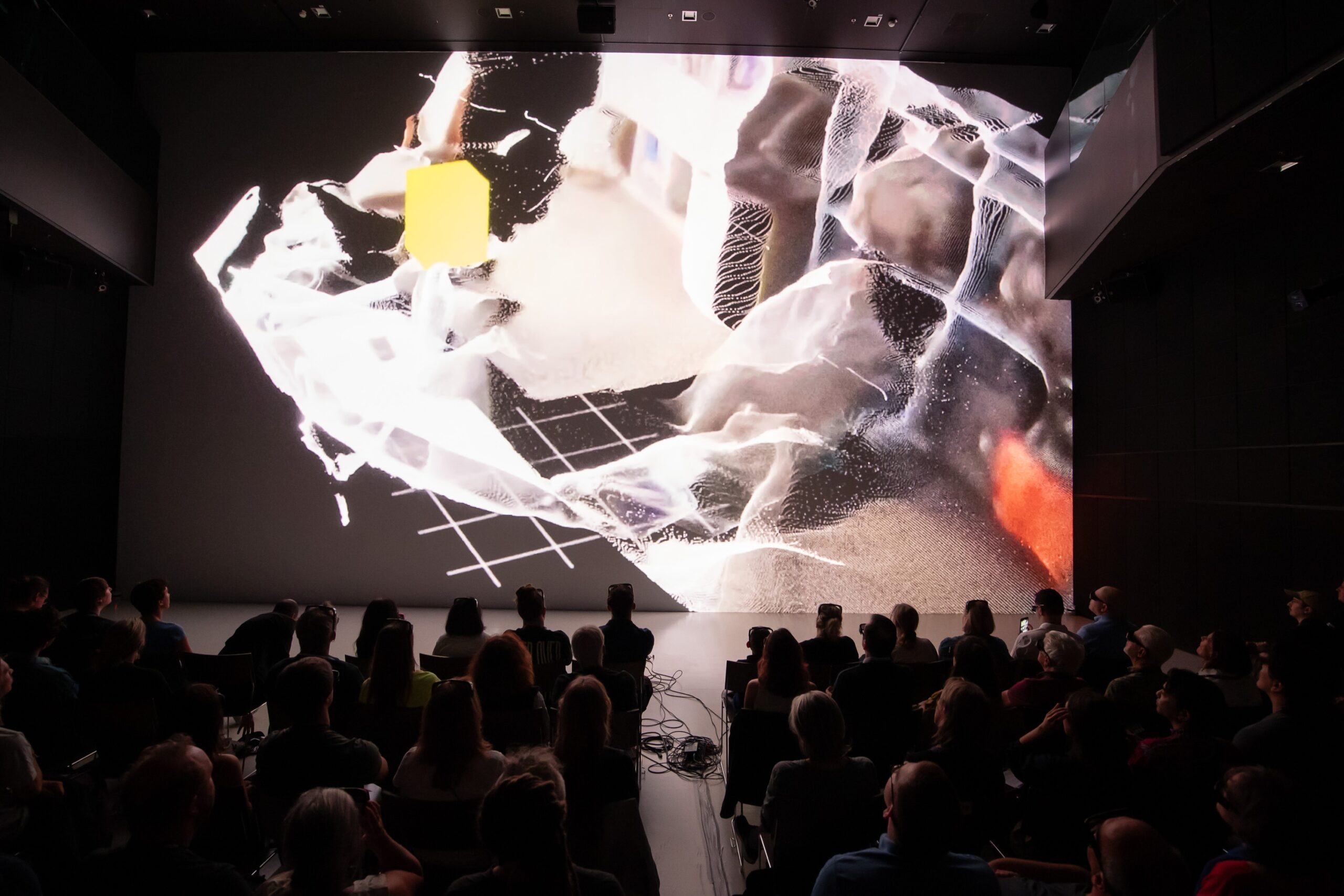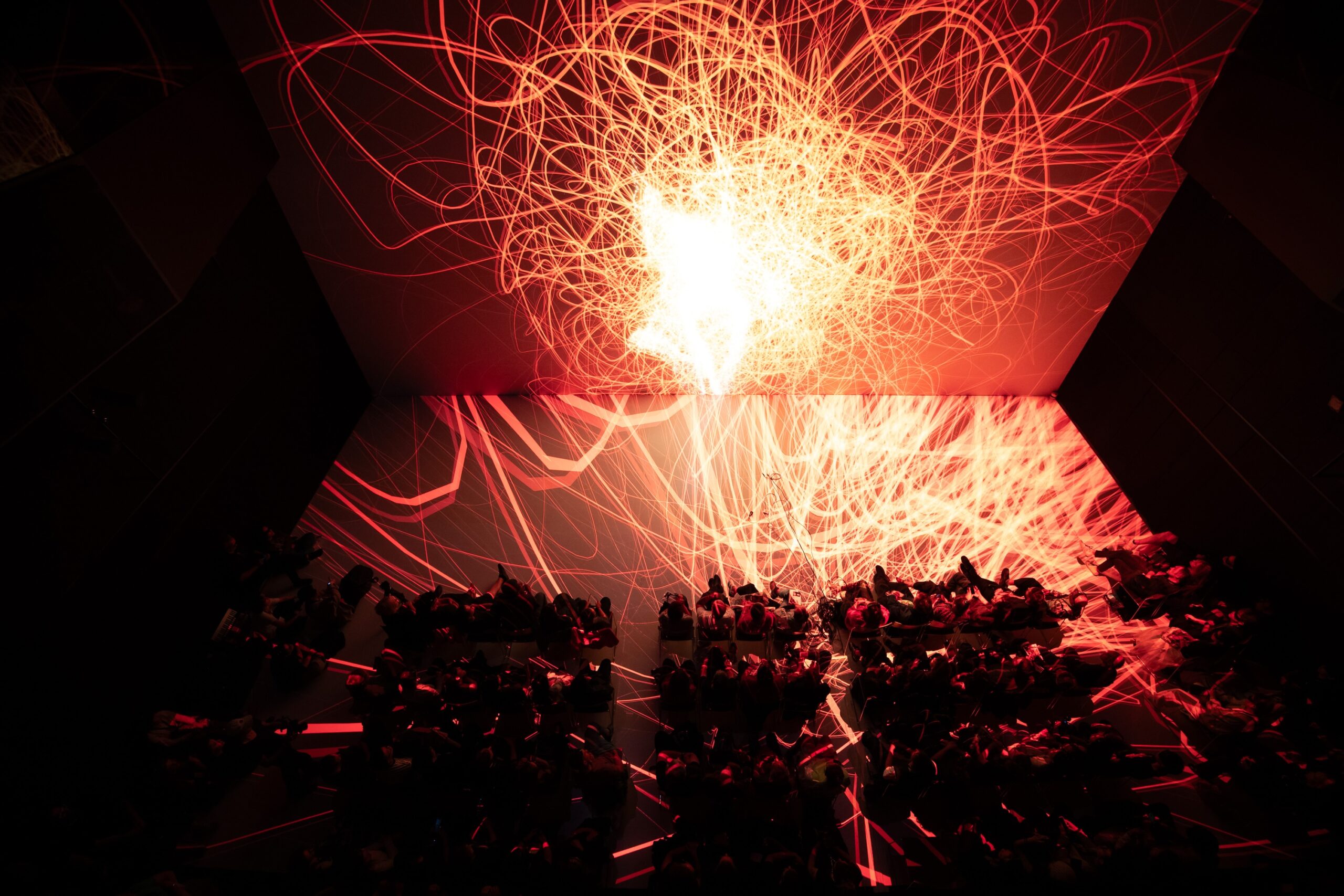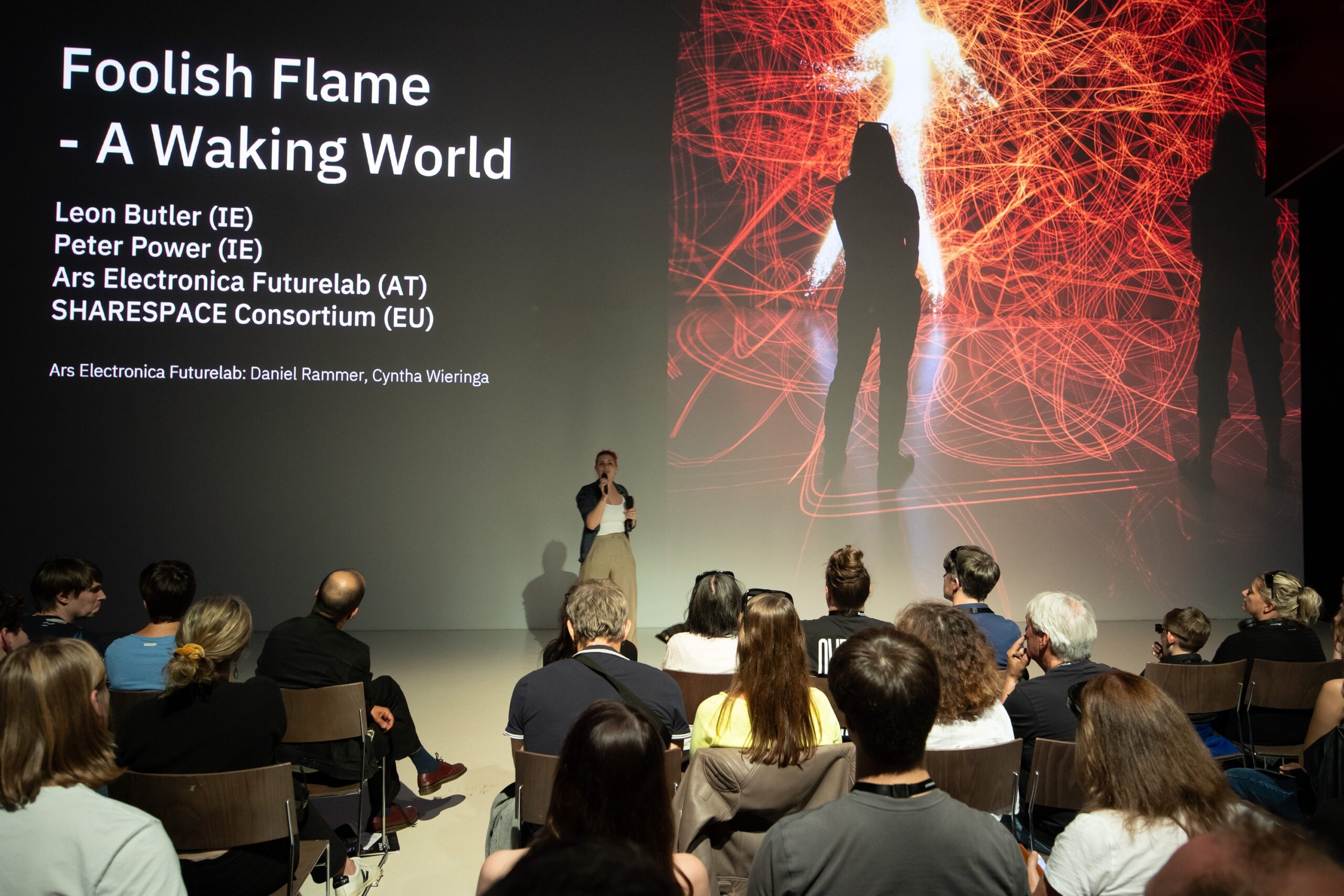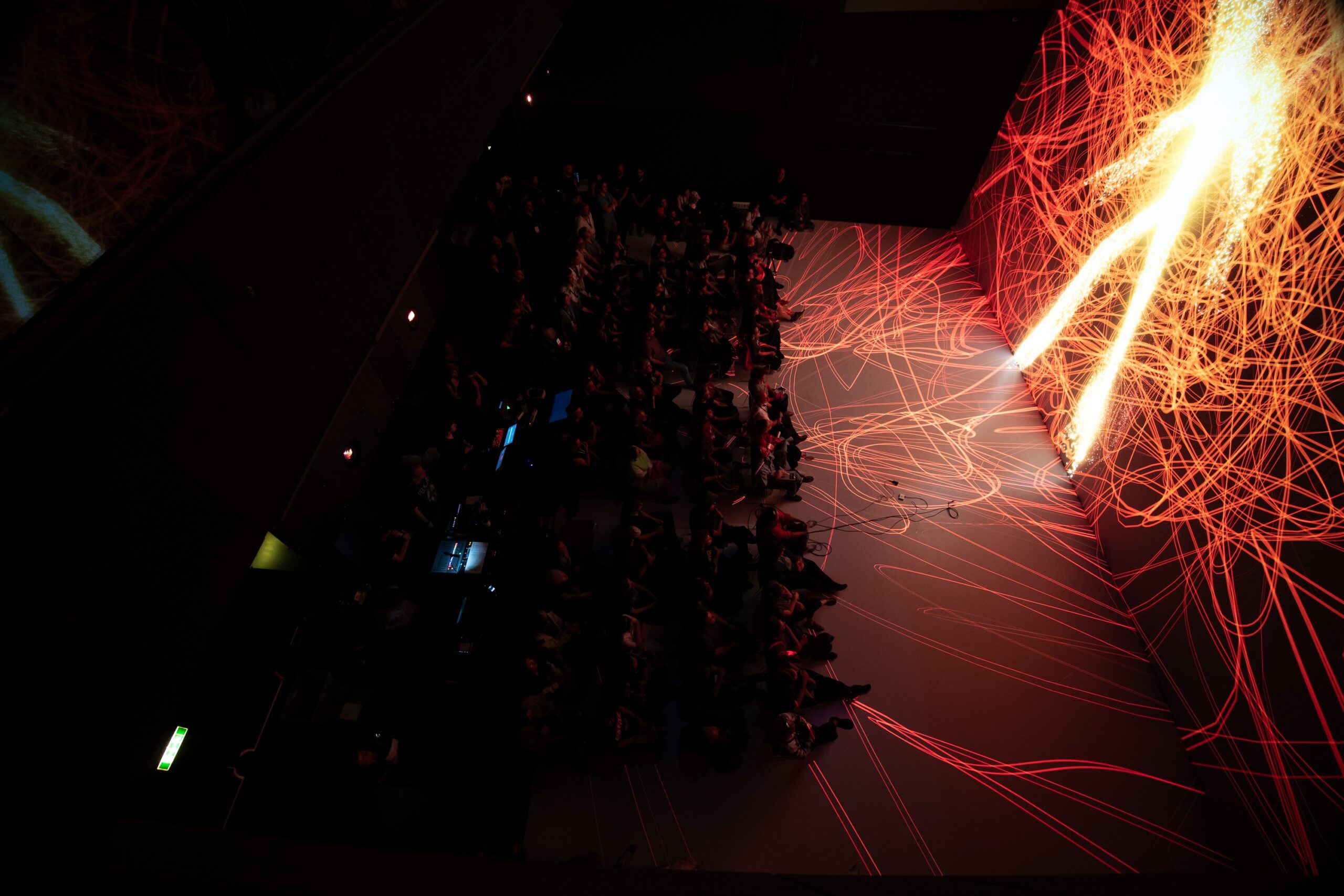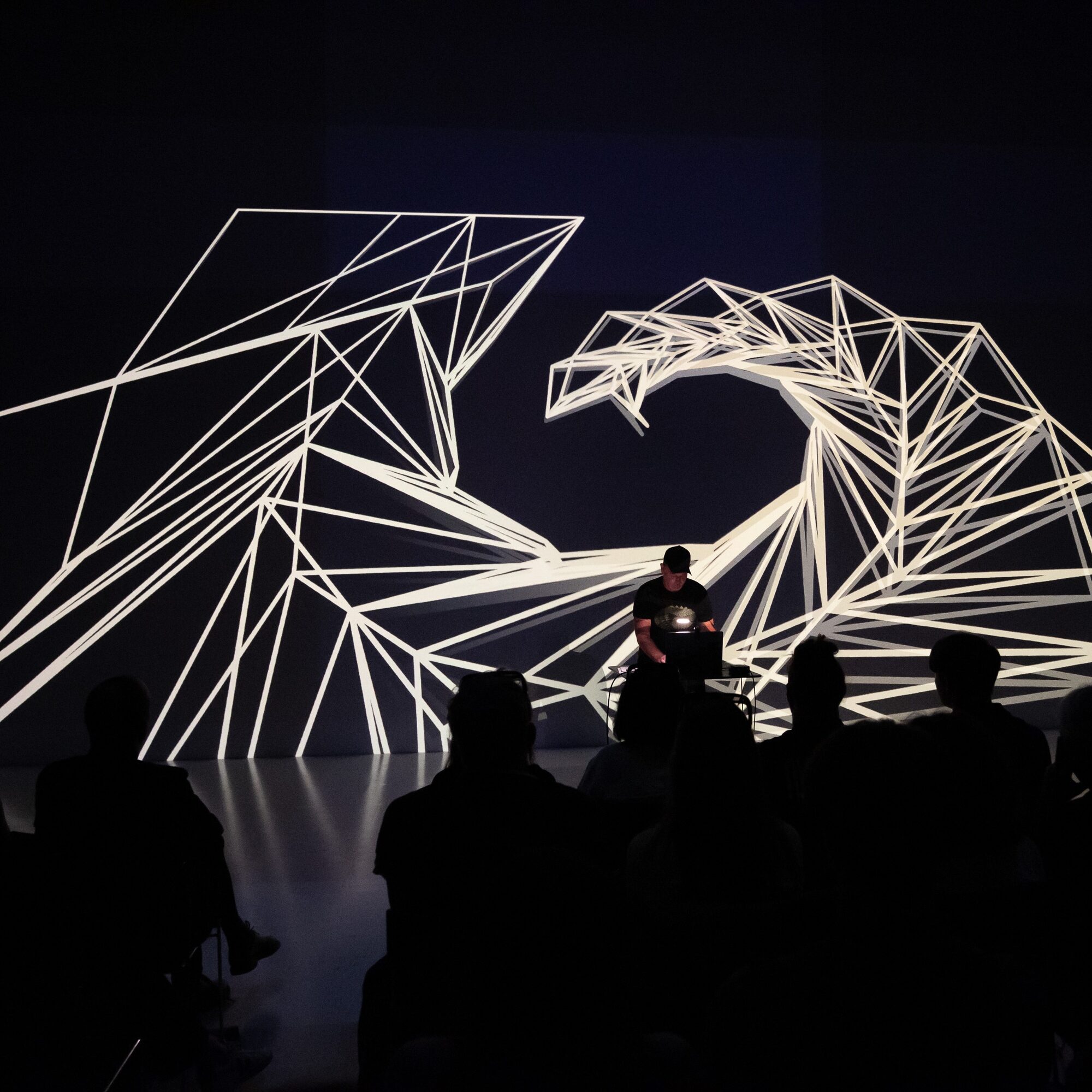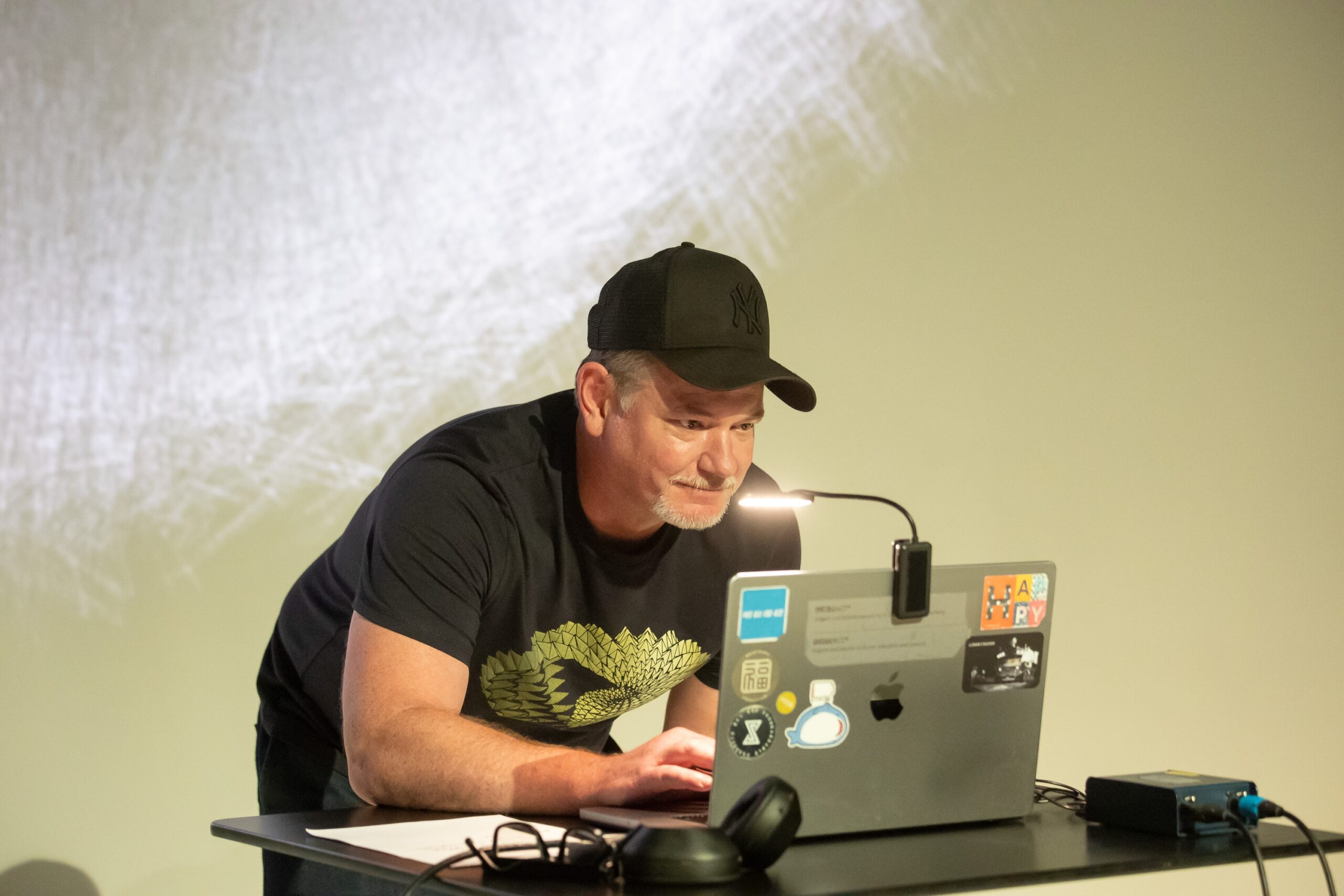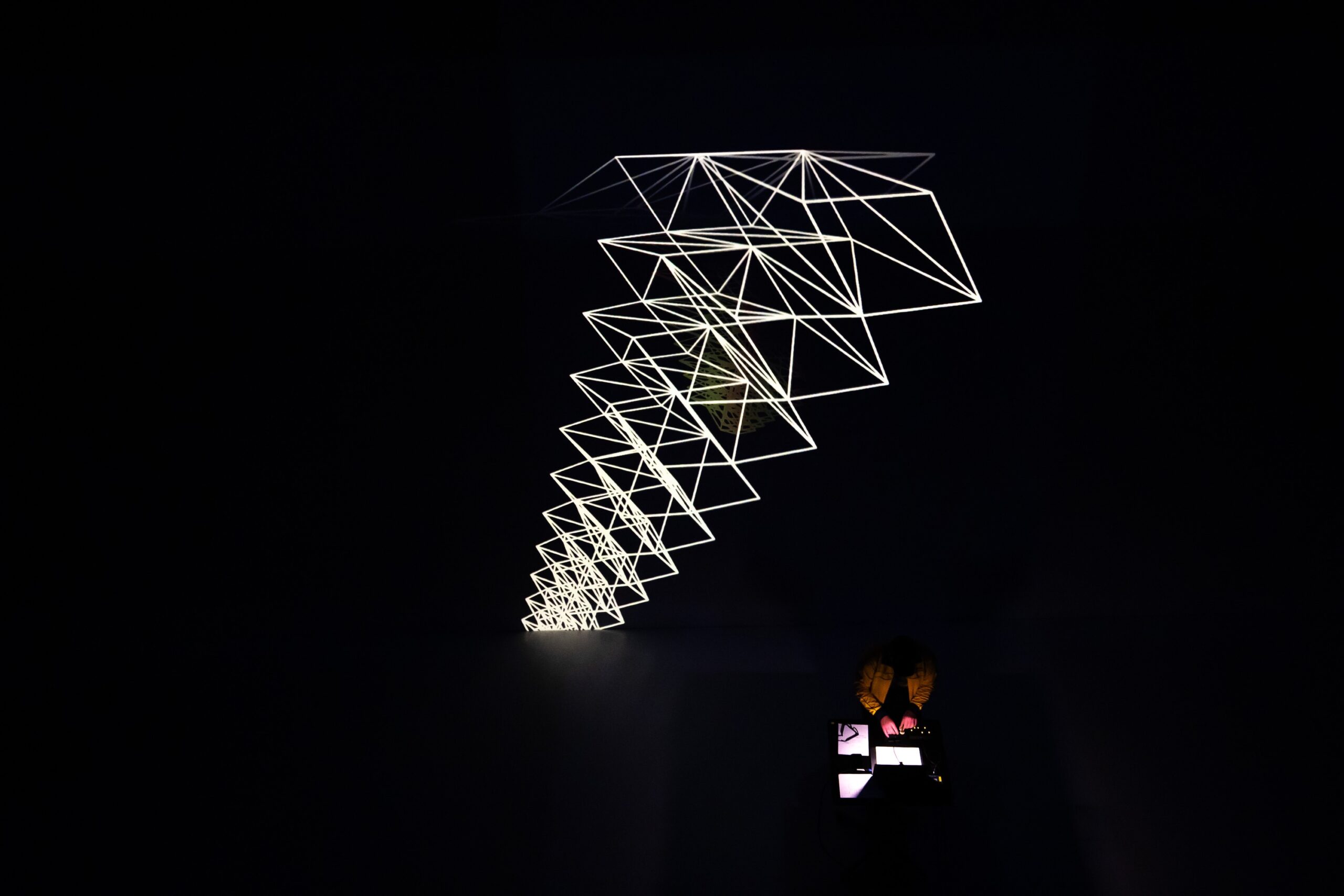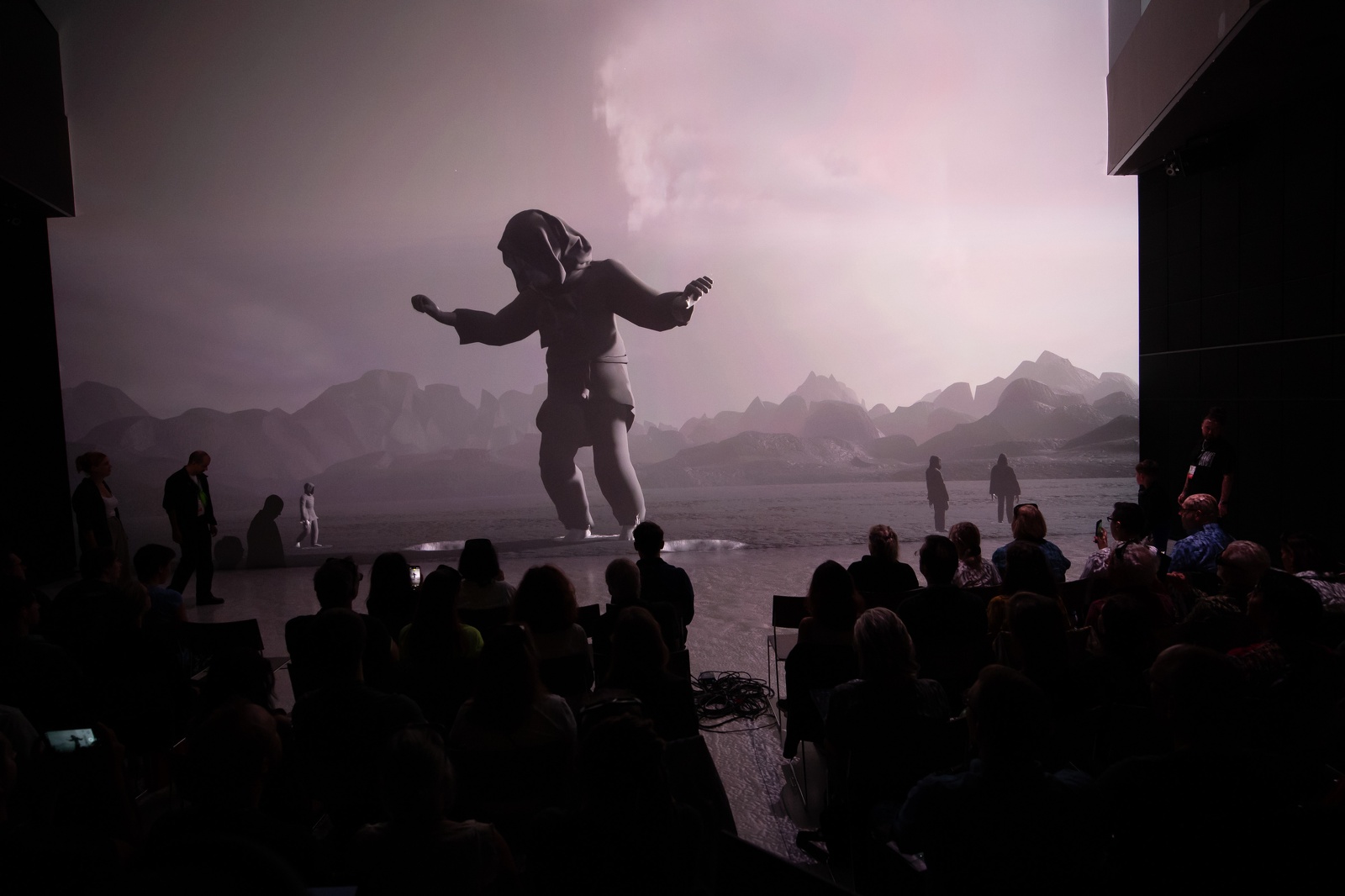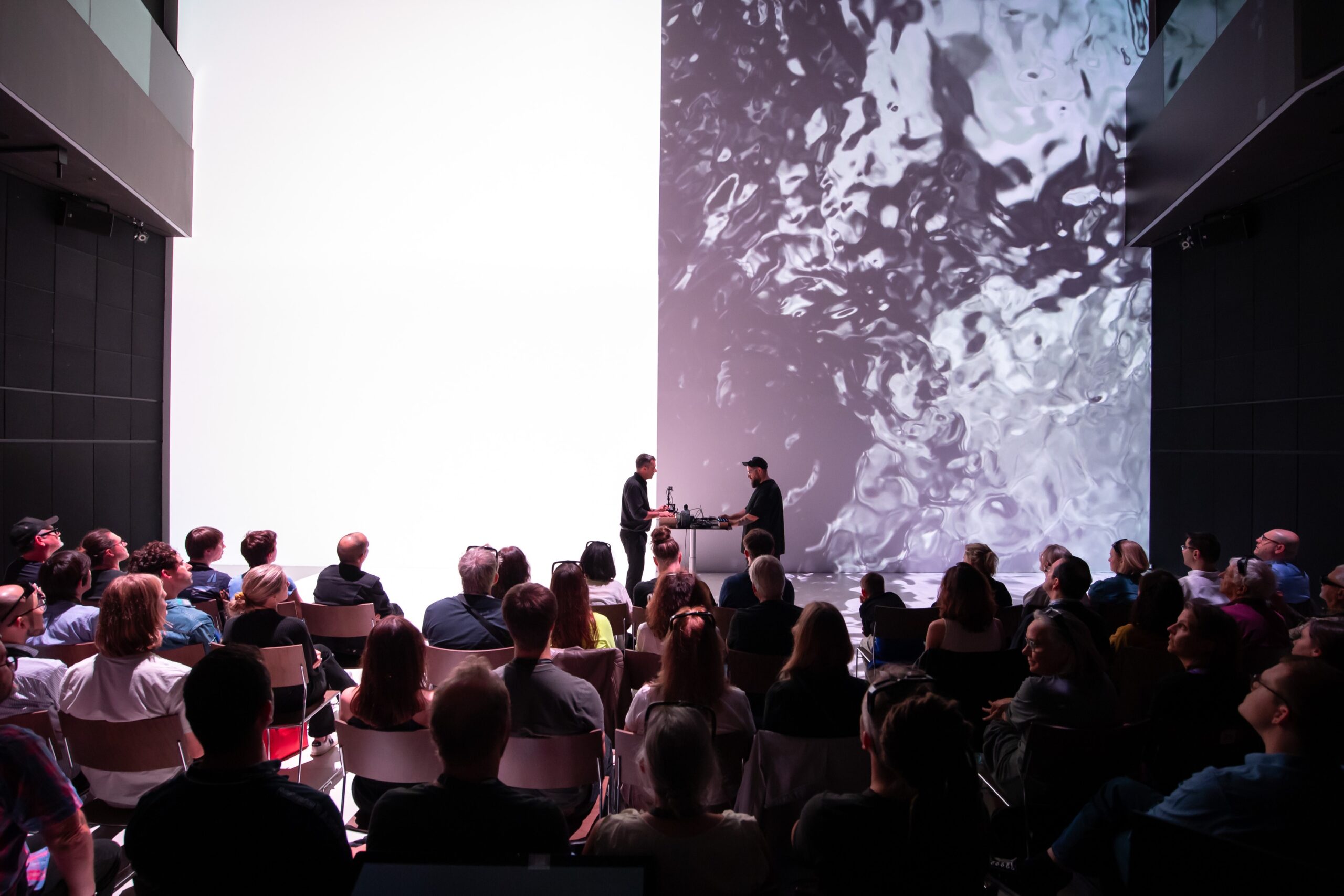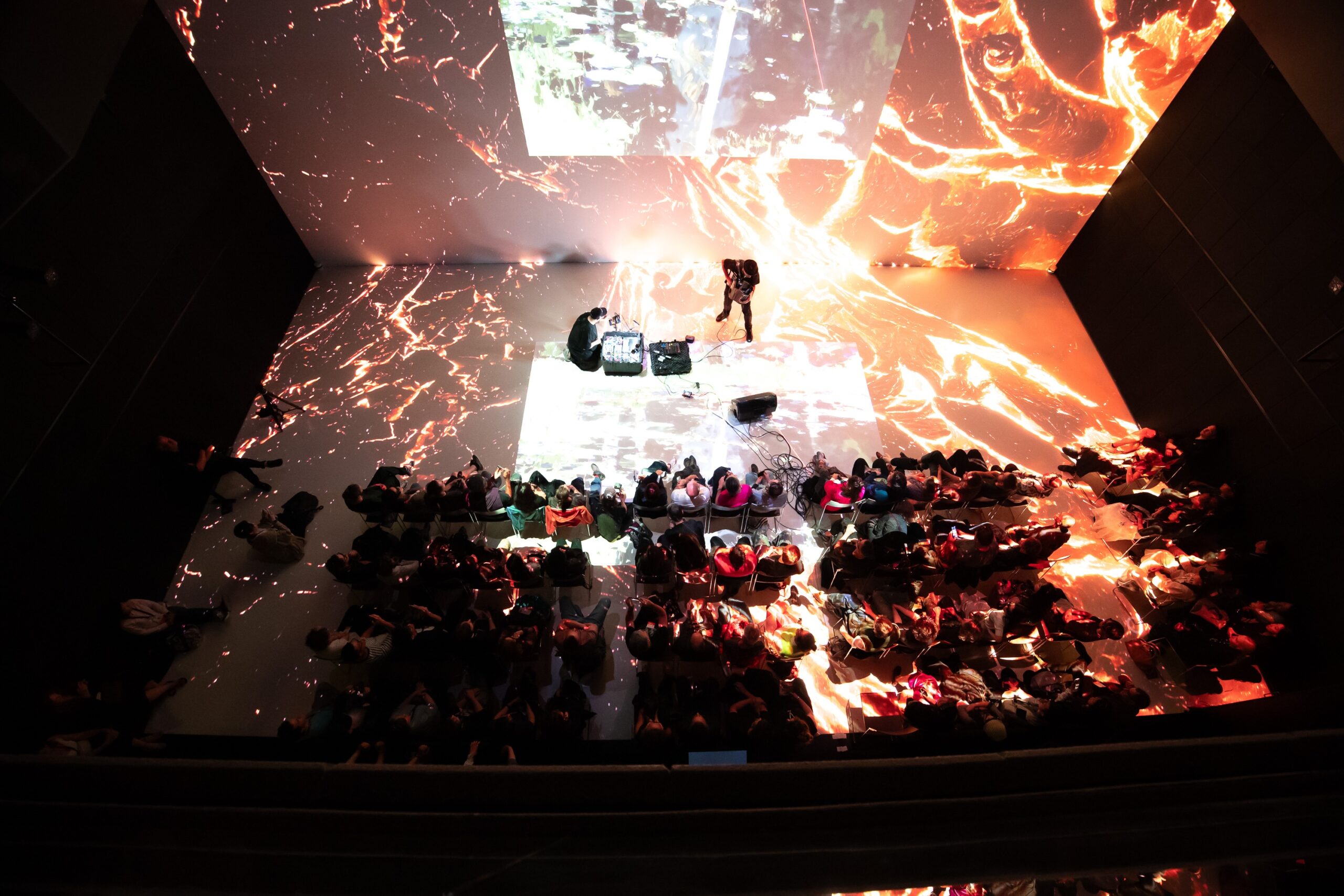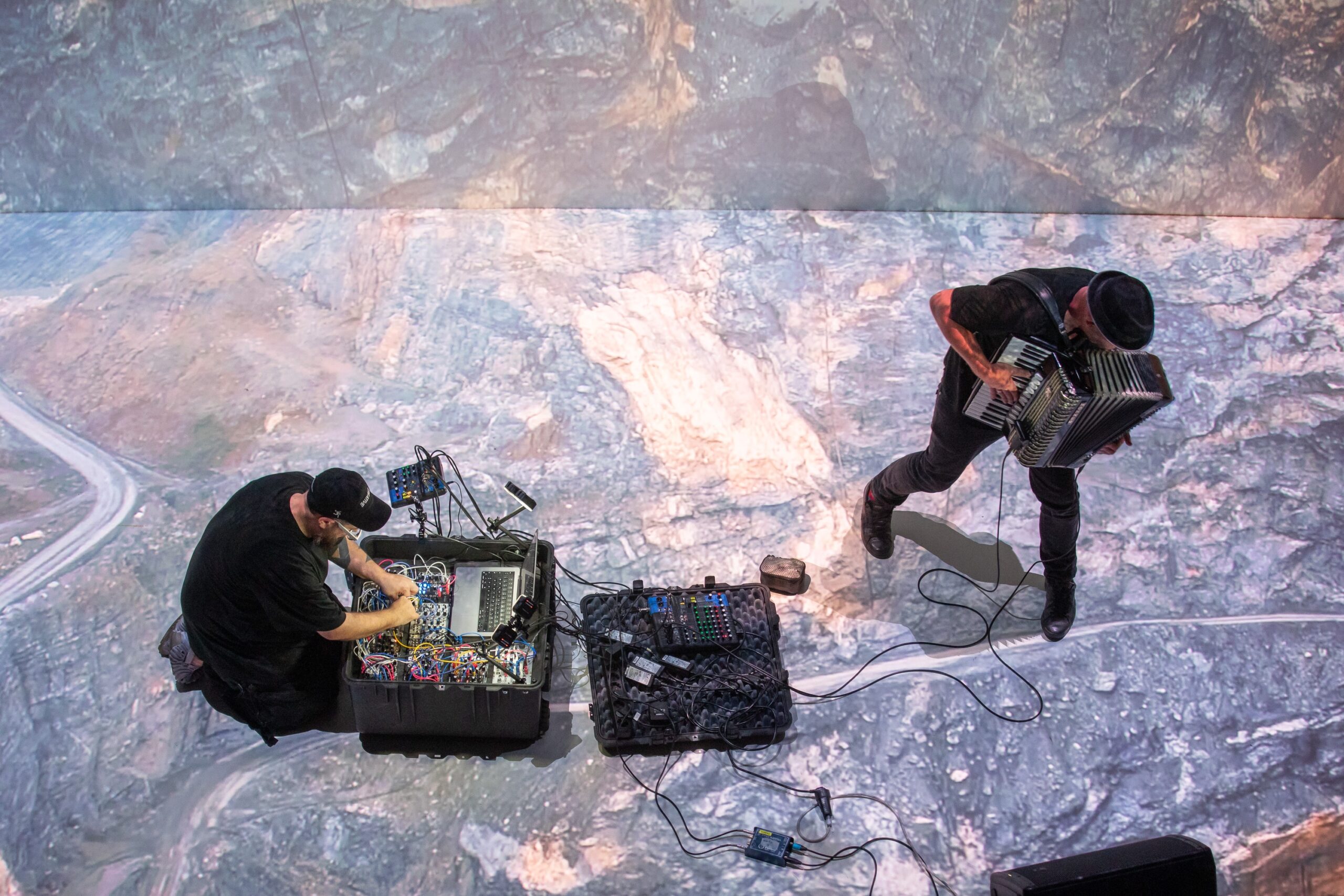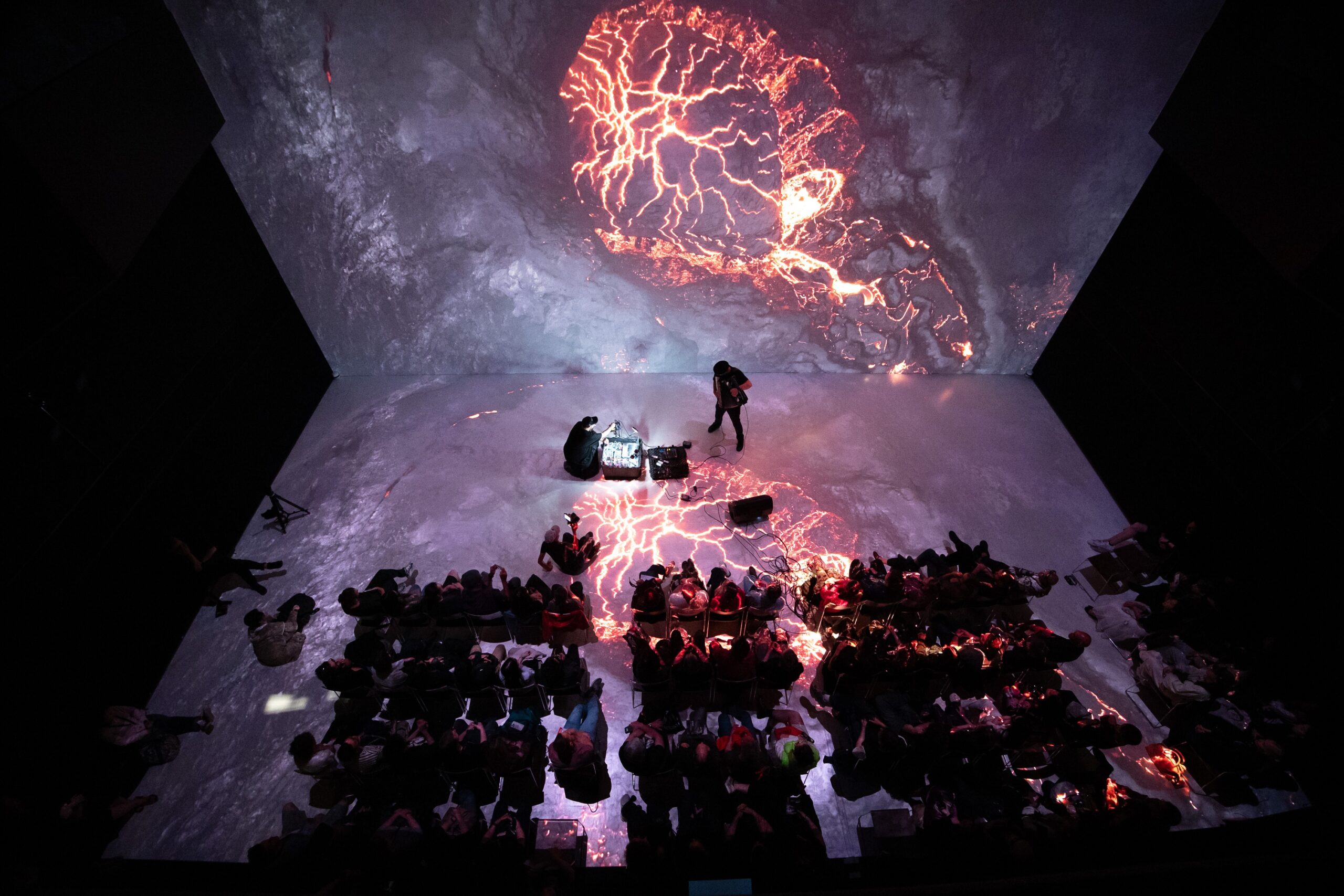Immersive experiments in synchronization, co-presence with avatars in hybrid spaces, and explorations of n-dimensional Origami made both visible and audible: Futurelab Night 2025 was once again the performative highlight of the Ars Electronica Futurelab’s activities at the Ars Electronica Festival. On the Deep Space 8K stage, artistic research transformed into captivating, multi-sensory experiences.
The evening opened with Beyond Curiosity – a participatory virtual tour through Linz, developed in collaboration with Linz Tourism. Using cutting-edge 3D Gaussian Splatting, it offers an unconventional journey through the city’s landmarks, allowing both visitors and residents alike to capture and share their unique perspectives.
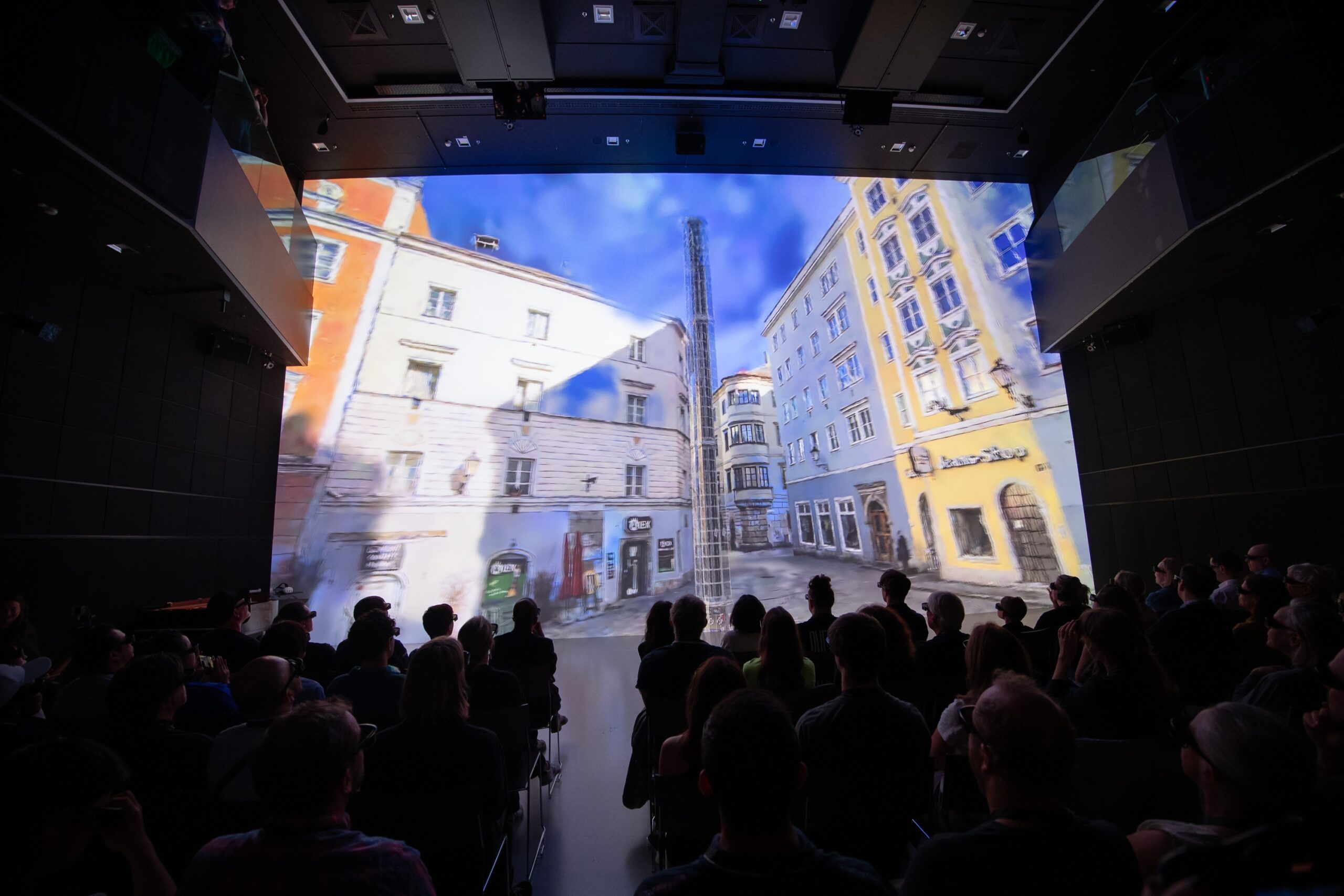

Following this, NeXus Print introduced a new XR platform that enables users to collaboratively build immersive worlds in real time with the help of generative AI. The project presents the latest milestone in the ongoing collaboration between Dai Nippon Printing (DNP) and the Ars Electronica Futurelab.
Musical innovation then took center stage with excerpts from Walzersymphonie, an artistic research project exploring how generative AI tools can take part in shaping new musical ideas. Composers Micha Fazeli-Pour and Fabian Blum, joined by Ali Nikrang from the Futurelab, presented their works on a self-playing piano.
The spotlight then shifted to the results of this year’s Futurelab Ideas Expedition – a program encouraging lab members to independently develop and explore experimental concepts. The first presentation, the speculative interactive interspecies experience Corpus Corax, invited the audience to engage in a simulated dialogue with ravens, blending scientific inquiry with creative speculation.
The second project, Inference Ground Truth, experimented with overlapping realities between human perception and machinic interpretation. Using Gaussian Splatting, visitors at the Open Futurelab contributed volumetric traces of their own movements, becoming part of a continuously evolving artwork.
Shifting focus, the EU project SHARESPACE investigated how humans might socially interact in the near future through digital avatars. This vision took creative shape in Foolish Flame, a transdisciplinary collaboration exploring the complex intersections of climate change and inherited cultural trauma. Through collective experience and real-time generative technology, visitors witnessed a fluid landscape of environmental narratives.
The evening continued with the presentation of Citizen Manifesto, highlighting a collective reflection on citizenship and future action. Throughout the festival, visitors exchanged ideas while an AI system acted as a creative partner — summarizing their discussions and transforming them into posters that became part of a shared manifesto, unveiled during Futurelab Night.
Matthew Gardiner, Futurelab’s Key Researcher of Origami Robotics, then took the stage to demonstrate how n-dimensional Origami can be experienced through both sight and sound, merging mathematics, sculpture, and music into a single performative exploration.
The evening continued with Converge 2, exploring collaborative multiplayer experiences in Deep Space 8K. Building on the original Converge from 2024, this new iteration expands the concept with refined scenes and the latest technologies from the SHARESPACE project, pushing the boundaries of shared presence and real-time collaboration in immersive environments.
Both sessions of Futurelab Night concluded with powerful audiovisual performances. In the first, Futurelab members Nicolas Naveau and Johannes Pöll recreated the soundscape of DAS Data Dining, blending the natural sounds of Lake Biwa’s water with the rhythmic dropping of its stones. Finally, artists Stefan Mittlböck-Jungwirth-Fohringer and Johannes Pöll closed Futurelab Night 2025 with their traditional noise performance 11°22’4″142°35’5″, a visceral journey into the depths of the Mariana Trench.
Beyond Curiosity – Ars Electronica Futurelab (AT), Linz Tourismus (AT)
NeXus Print – Ars Electronica Futurelab (AT), Dai Nippon Printing (JP)
Walzersymphonie (Waltz Symphony) – Ars Electronica Futurelab (AT) on behalf of Johann Strauss 2025 Vienna (AT), Micha Fazeli-Pour (DE/AT), Fabian Blum (DE)
Corpus Corax – Peter Holzkorn (AT), Nicolas Naveau (FR/AT), Anna Weiss (DE/AT)
Inference Ground Truth – Johannes Pöll (AT), Raphael Schaumburg-Lippe (AT), Simon Schmid (AT)
Foolish Flame – Leon Butler (IE), Peter Power (IE), SHARESPACE Consortium (EU)
Citizen Manifesto – Ars Electronica Futurelab (AT), Hakuhodo (JP)
Oribotics [n-dimensional] – Ars Electronica Futurelab (AT), Matthew Gardiner (AU/AT), Luca Zimmermann (CH), Kanata Warisaya (JP)
Converge 2 – Patrick Berger (AT), Victor Petro (AT), Johannes Pöll (AT), Daniel Rammer (AT), Raphael Schaumburg-Lippe (AT), Cyntha Wieringa (NL), SHARESPACE Consortium (EU)
DAS Data Dining – Ars Electronica Futurelab (AT), DAS Lab (JP)
Beyond Curiosity – Ars Electronica Futurelab (AT), Linz Tourismus (AT)
NeXus Print – Ars Electronica Futurelab (AT), Dai Nippon Printing (JP)
Walzersymphonie (Waltz Symphony) – Ars Electronica Futurelab (AT) on behalf of Johann Strauss 2025 Vienna (AT), Micha Fazeli-Pour (DE/AT), Fabian Blum (DE)
Corpus Corax – Peter Holzkorn (AT), Nicolas Naveau (FR/AT), Anna Weiss (DE/AT)
Inference Ground Truth – Johannes Pöll (AT), Raphael Schaumburg-Lippe (AT), Simon Schmid (AT)
Foolish Flame – Leon Butler (IE), Peter Power (IE), SHARESPACE Consortium (EU)
Citizen Manifesto – Ars Electronica Futurelab (AT), Hakuhodo (JP)
Oribotics [n-dimensional] – Ars Electronica Futurelab (AT), Matthew Gardiner (AU/AT), Luca Zimmermann (CH), Kanata Warisaya (JP)
Converge 2 – Patrick Berger (AT), Victor Petro (AT), Johannes Pöll (AT), Daniel Rammer (AT), Raphael Schaumburg-Lippe (AT), Cyntha Wieringa (NL), SHARESPACE Consortium (EU)
11°22’4″142°35’5″ – Stefan Mittlböck-Jungwirth-Fohringer (AT), Johannes Pöll (AT)


